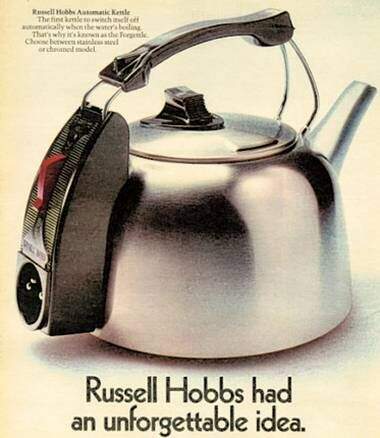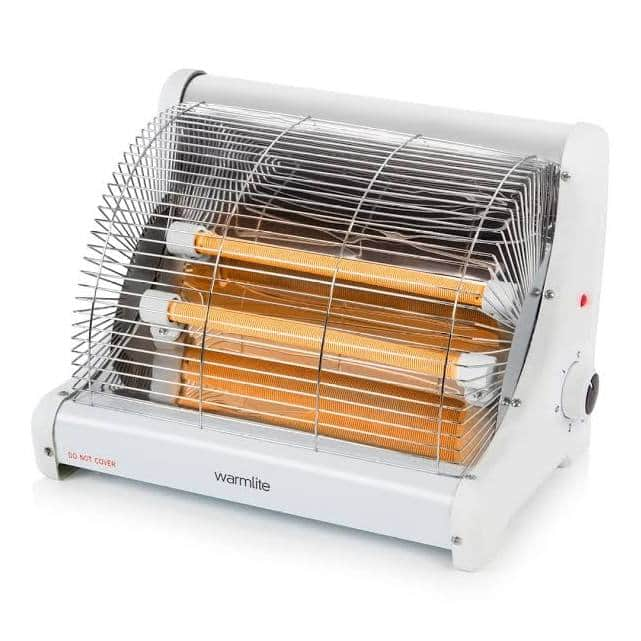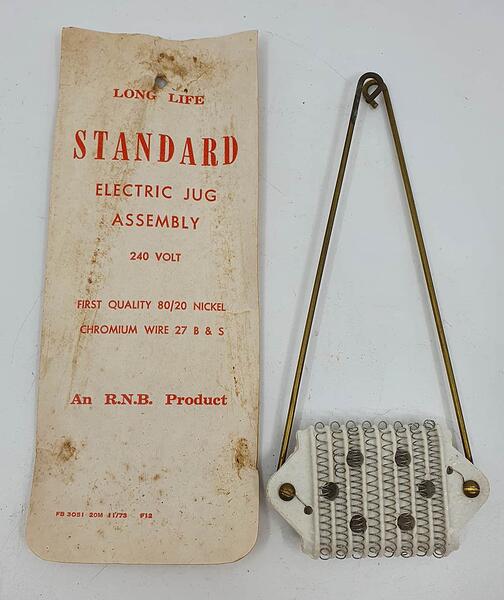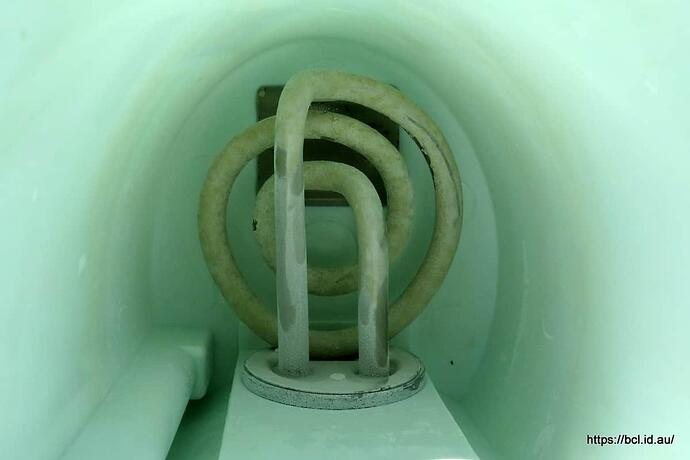Is the element under a plate at the bottom?
Our cheap stainless steel Tesco kettle has a concealed element.
Yep,
That’s the type
I recall being able to purchase and thus replace a kettle’s element fairly easily. Haven’t even bothered looking to see if this is possible anymore. Wonder how the element is attached to that base plate, and whether it would be economically or indeed physically viable to replace it?
Guess I’ll have to wait for my kettle to bust before I get a chance to see.
Kettles are cheap enough these days Dex, and the cost of finding and purchasing a new element would probably work out more expensive.
I suppose I’ve always taken for granted that everyone has a kettle because here in the uk it’s probably the one item every household has.
I was surprised in hotel rooms in the US that there were coffee makers and no kettles.
Such a shame. Too many things in this throwaway culture.
I recall changing the heating bars in these sort of thing when I was a kid:
Doubt that many people would bother nowadays.
I was telling someone about my electric kettle tonight. She said that she had never seen one but her mom’s friend had one. That’s how far she had to reach to find someone who had one. I literally don’t know anyone personally who has one. As I talk about it more, some people here and there say that have one.
Has anyone fitted one of those Quooker (or similar) instant boiling water tap things?
Are you in USA? They are not common there, it seems to be a European thing?
Before we had electric kettles we had the ones you boiled on the gas rings, they would often have a whistle that blew when the water boiled. My grandmothers had those.
Yes my brother and also my son have them.
I don’t think they’re as good for tea, but ok for coffee.
Yes, I’m not in Europe. My family also had those hot water pots that whistled when they boiled on the stove but I never owned one.
We had a kettle that sat on a swivel thingy that placed the kettle over the open fire. You needed a cloth to handle the thing once it had boiled…None of our council houses had gas.
The toast was out of this world though…Yum!
![]()
Cool 
I don’t know what I’d do without my kettle. lol
I do miss the electric jugs but I can understand why they have gone for safety reasons because the water was “live”. The element was just a heating wire if it failed you could just join it back together. My favourite didn’t have a heating element at all, just two metal plate separated by an insulator - worked brilliantly, if the water boiled away it just stopped working.
The lid was held down by the presence of the plug to stop you electrocuting yourself. I will try to find a photo.

Ha ha, a “vintage” one for sale on ebay. The element was fixed from the top, the plug went in at the square piece under the lid and stopped the lid being opened while it was plugged in.
This is the old element type
Apparently these jugs are a collectable item now.
There’s a bit of nostalgia for you.
An update to this thread. I’ve been using my new electric kettle every day since shortly after I posted this thread. It’s comforting to have hot water at my finger tips. It has made this winter a little warmer.
I cannot think of a time when I was not around without an electric kettle in the home and I’m 80 this year. They had to have a ‘loose’ electric lead that was unplugged from the kettle to fill it up and there was not any type of auto-off switch when it boiled, but they all worked well if just a tad inconvenient having to ne watched. The earliest make I can remember with auto-off when boiled was the Russel Hobbs

Hi chilliboot, that’s an easy fix. From any supermarket cooking area just buy a small container of Citric acid.
Pop a teaspoonfull of that in the jug full with hot water and leave it.
Later rinse it all out and VOILA you should have back your nice squeaky clean jug.
Repeat same if it hasn’t completely cleaned your jug that first time. 
Yep, thanks!
I ended up adding about quarter of a bottle of Sarson’s white vinegar to the kettle and then half filling it with water and swishing it around every so often.
Just to be on the safe side I added some bicarbonate of soda for an additional couple of hours… worked a treat 
I use a similar method. Most Australian water is soft water but occasionally I travel in areas that uses bore water especially in drought. Bore water has more minerals than you can point a stick at and even after only a few days the kettle starts to fur up. When I get home I defur with a similar method to yours except I boil the white vinegar mix in the kettle before rinsing it.
It works a treat.
Before:
After:




